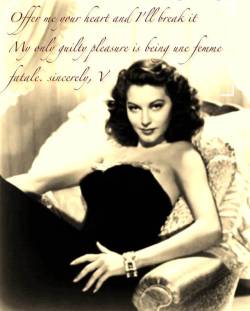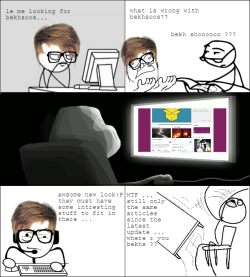Divide and Rule!
359 viewsRecently, I have been pondering the excess to which western GLBTQ organizations managed to reach many of the goals they have been fighting for. One could say, yes, sure, they have gone a long way already, and have in fact accomplished a lot. But I have to admit, I am still not convinced that those achievements were attained without certain sacrifices. I cannot recall which feminist said the following statement, but I will paraphrase it anyways: women only achieved what men allowed them to. As far as I can remember, her statement was not meant to undermine the work that feminists had done by any means. But as I would like to construe her words, what she said sounded like a warning, and a valid one in my opinion, against the schemes of patriarchy and its manipulations. I might be an extreme in thinking this way, but I am still convinced of the following: queers have achieved a lot, but not without adhering to and absorbing a lot of the major heteronormative patterns that are constantly being enforced and highly upheld by heteronormative heterosexuals and by heteronormativized queers alike (notice my falling into the trap of using the binary of “them” and “us” although I am trying to criticize it in this article.) When I think of heteronormative politics of exclusion, I immediately think of the stereotypical representations of Queers in the media, academia, politics, and other venues (stereotype being read here “enforced by heteronormative politics and following the way “it” perceives or chooses to represent queers”). In this article, however, I want to focus on yet another side of the heteronormative hegemony; namely, the concentration of queer communities in specific, now well-renowned spots everywhere in the world as yet another means and somewhat a successful attempt at exclusion and keeping the gap between the queer and the non-queer existent and constantly present.
Looking at a tour-guide book as I was planning to visit Cologne in Germany with a few friends, I was a bit upset after reading the first line, which read something like: Cologne is considered the gay capital of Germany. At first, I was not sure what exactly that meant. What is a ‘gay city’? The first thing that comes to mind is that this is a gay-friendly city that offers a gay-friendly environment, and in which queers could live with minimal fear of harassment and prejudice and a maximal feeling of safety and security. However, that was not the only thought swirling in my head at that moment. Apart from thinking about the current, capitalist obsession with selling and commercializing ‘the queer,’ the second thought that struck me was, the queer community is simply suffering another layer of “othering and exclusion.” In other words, this is yet another facet of the perpetual reiteration of a heteronormative pattern which works on building another wall that divides individuals into “ones” (the heteronormative) and “others “ (the un-heteronormative), with the emphasis being on the visibility and exposure of the latter. Dating back to the nineteenth century, Michel Foucault rightfully stated that “the nineteenth century homosexual became a personage, a past, a case history, and a childhood, in addition to being a type of life, a life form, and a morphology” (43). Foucault is saying here that the birth of the identity “homosexual” dates back to the nineteenth century, in which the sexually-aberrant has been heavily scrutinized, studied, and shaped by the legal and medical discourses. Those heteronormative, hegemonic discourses of power rendered the sexually-non-conforming “visible”: he became a distinctive “species” (43) that one could spot and on whose body all signs of deviance could be recognized and perused. This imposed, albeit fictional, “visibility” of homosexuality, as opposed to the ubiquity and naturalness (and thus invisibility) of heterosexuality, is still prevalent and highlighted in our postmodern times more than ever before. This enforcement of “visibility” on queerness, most specifically on homosexual men, is undeniably at work not only in fields where queerness gets the honor of being represented (for example, in media and the arts), but also in the very physical existence of those detectable queer bodies: where they are supposed or recommended (read, pushed or forced) to “choose” to live. This indirect and rather subtle way of demarcating the space between “us” (the normal) and “them” (the abnormal) has highlighted the already-unique visibility of the queer (that is, the queer being made visible by putting him/her in his/her right place: quarter, neighborhood or city) and consequently further emphasized the eternal binary of and the “natural” dissimilarities between “ones” (the subjects, the natural) and “others” (the non-subjects, the unnatural). I would indeed postulate that the queer has absorbed this feeling of otherness and has decided to congregate with people who are “like” him/her in certain suburbs or areas or cities, which people (queer or not) start (read: become trained, brainwashed and socially-constructed) to call “the gay quarter,” “the gay neighborhood” or the “gay city.”Examples vary from California, Madrid and Cologne as major ‘gay cities’ (with a large population of queers) to names of certain neighborhoods in other cities, which come to be known as the “gay neighborhoods,” where only gays live, and only gays, sometimes, are allowed to live.
A friend of mine who lives in Boston at the moment told me the following: ‘In the gay neighborhood in Boston, only the sexually-queer, most-preferably homosexual men, are allowed to rent or buy apartments. The renter or the seller usually asks frankly or inquires about the person’s sexuality first. If they are queer, then they can rent and buy; if not, they are simply dismissed.’ Allowing someone to live here or not becomes a game of who can SPOT the queer body by reading the signs and the unique symptoms that queers are supposed to possess. The sad thing is, this game is played by queers themselves. I might be drawing major conclusions from simplistic (or general) examples, but I would also like to say that this is not by any means uncommon. I understand this bond and feeling of joy that one experiences by living in an area where they feel a hundred percent NORMAL and NATURAL; NOT DIFFERENT FROM ANYONE ELSE. But what I do not seem to be able to comprehend is: why turn a blind eye and ignore such a demarcation that disallows queers from deconstructing this binary of heter/queer? Why not question it, criticize it, and even try to challenge it? Why the exaggeration in the adoption of the heteronormative pattern of exclusion, which puts us back in our places, in a way that sounds like we are being constantly contained in certain circles as if we were a sickness that needs to be controlled. The problem is, we have adopted this pattern of excessive exclusion and we act upon it as if it were natural and for our best. We are doing nothing more than reproducing the same kind of the heteronormative discourse of the normal, who is present everywhere, and the abnormal, who is present only in certain, easily-identified places. This feeling of ultimate belonging and the ecstasy of knowing that we have our own world feels, in many ways, positive and empowering. Nonetheless, one of the things it helps do is reinstating and repetitively redrawing the thick lines that “should” always be present between “our queer space” and “their normal space.”
Sources:
Foucault, Michel. The History of Sexuality: Volume 1. Trans. Robert Hurely. New York: Vintage Books, 1978.
Contributed by Fadi S.





Leave a Reply